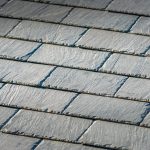Seal of approval
When it comes to window installation sealants, housebuilders and developers are not only looking for excellent thermal and acoustic efficiencies to meet and exceed regulations, but also products which are faster and simpler to install and have improved reliability over a longer service life.
It is imperative that during new installations and replacements, windows and doors can be quickly and easily sealed, ideally from inside the building. High performance ‘fit and forget’ impregnated tapes are ideal for fast and effective sealing, with ease of installation due to their inherent user friendly features. Based around the European RAL principles of three-level sealing, these products help to avoid time consuming and costly delays, leading to potential savings of hundreds of pounds per day.
The greater the amount of installations that can be carried out within any given time period means a higher margin for installers. ISO-Chemie estimates that its ISO-Bloco One multi-purpose foam sealing tapes can provide significant cost savings, thanks to their fast installation capabilities.
Three-pronged protection
Three-level sealing ensures that buildings are better protected from wind, dust and moisture ingress by accommodating the changes in structural movement caused by environmental, cyclical and settlement factors. The external seal area supplies weather resistance and breathability, while the intermediate seal area provides extra thermal and acoustic properties. The internal seal incorporates airtightness and humidity regulation. All three levels are designed to accommodate movement between the adjacent materials.
The most advanced sealants for windows and doors can meet stringent new energy efficiency building regulations. They are able to accommodate extremes of temperature change of anything from -30°C to +80°C. They can also accommodate the interaction of differently designed window frames made of wood, PVC and aluminium against various construction materials and methods, in order to guarantee complete sealing. This prevents humidity penetrating the building connection joint and stops damage to the building in the long-term.
The sealing products most in demand are so called ‘all-rounders’, which can be used for both passive energy houses and for refurbishing buildings. They can be specified to significantly reduce a building’s convective heat losses, which has a positive effect on energy balance. To further reduce delays, impregnated and pre-compressed Polyurethane (PUR) foam ‘fit and forget’ sealants can be installed in windows, regardless of external weather conditions.
In older buildings, large amounts of warm air are quite often lost, a fact that is reflected in proportionally higher heating bills. For this purpose, sealing existing dilapidated building joints can help improve the long-term energy efficiencies of new fittings and reduce occupant bills in the process.
When listed buildings are refurbished, their appearance and basic historical structure must be retained to a major extent. A common difficulty when refurbishing or renovating old buildings is making sure that high energy-related requirements are combined with functionality. The ability to absorb movement and reliably process the material is also a challenge. Therefore, sealing systems must not only be functional and efficient, but also sympathetic to the original appearance of the building.
The customer’s needs
Feedback from many of the UK’s biggest housebuilders, developers and merchants has revealed that they want sealing products to combine ease of installation with guaranteed ‘as built’ high levels of performance. Ideally, they desire products which are able to withstand driving rain at a minimum of 1,000 Pa and have internal airtight seals that can meet a 1,000 Pa pressure difference, which is around 20 times more than UK Building Regulations. Zero air loss, U-values of around 0.55, and a sound reduction of 45 dB after installation are also increasingly in demand.




















